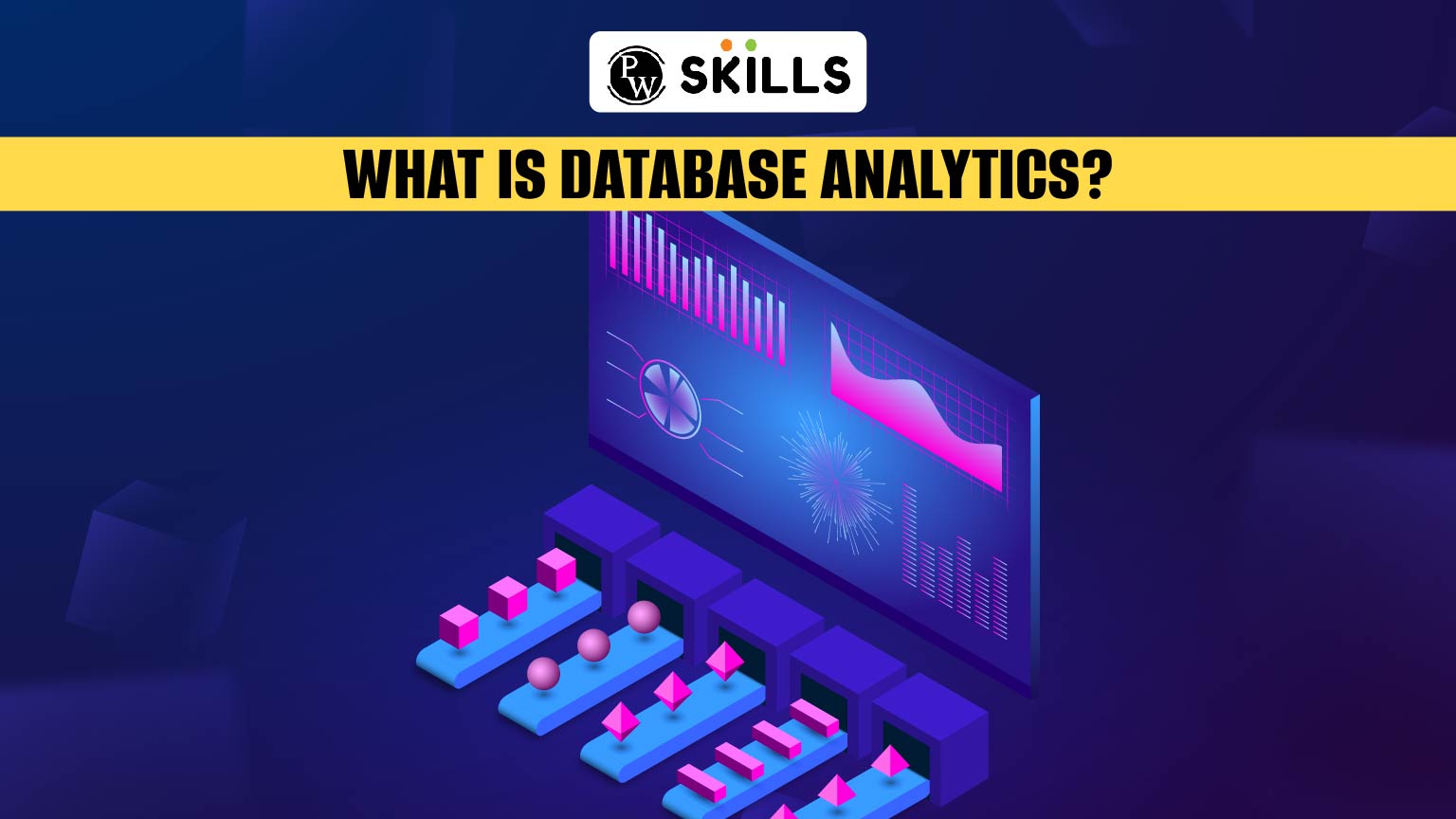Database analytics is a more efficient way of analyzing and interpreting data stored inside the database. It can be efficiently retrieved and processed irrespective of larger volumes and complex collections. Database analytics combines the power of both database management systems and data analytics to extract useful insights, and patterns and make informed decisions rather than separately performing the analytics. Read the article to learn more about database analytics and its benefits.
What is Database Analytics?
Database analytics is a method of interpreting and analyzing data stored inside the database to extract useful insights, and patterns and make informed decisions rather than separately performing the analytics. Database analytics is a combination of database management and analytics which come together to the vast amount of unstructured data stored inside the database.
With the help of database analytics, lots of time and effort can be saved eliminating the need to transform data and move it through any other application. In this article, we will learn about database analytics and its benefits, and methodologies in detail.
Why use Database Analytics?
Database analytics consists of a data warehouse storing all the useful insights in a processed manner which also helps to perform parallel processing, scalability, partitioning, optimization, and more.
With the help of database analytics, no separate data analysis has to be carried out on other platforms which makes data retrieval and analysis much faster and effective. Companies can make better-informed decisions to handle business risks and identify trends, spot irregularities, anomalies, etc.
Most businesses use database analytics for intensive processing such as fraud detection, risk management, trend analysis, pattern recognition, credit scoring, and much more.
Benefits of Database Analytics over Traditional Data Analysis
Database analytics have certain advantages over traditional data analysis methods. Let us check some of them below.
- With database analytics, we can effectively handle large and complex volumes of data. Database help to manage and store vast amounts of data providing scalable analysis for extensive datasets.
- Traditional data analysis requires a spreadsheet or external tools when dealing with complex datasets.
- It provides more optimized querying techniques and strategies to enable faster analysis and data retrieval. It reduces the time to obtain insights compared to manual data analysis methods.
- Database can be used to integrate multiple tools and platforms to provide comprehensive analysis.
- Many database analytics tools provide support for real-time data analysis techniques.
- Database analytics provides better data integrity and advanced security features especially when dealing with sensitive data. It provides built-in security features such as encryption, access controls, etc.
- It can also help automate various repetitive processing tasks during analysis.
Disadvantages of Traditional Data Analysis
Some of the problems which were frequently faced during data analysis are mentioned below.
- A lareg volume of datasets need to be imported on various analysis platforms such as excel, spreadsheet, googlecollabs, etc. It reduces the performance and increases the waiting time. Also, scalability is reduced.
- Real time analysis is not possible as uploads cuts off rapidly changing data.
- Exposures and vulnerabilities in data imported can produced significant data leaks.
Working on Database Analytics
Database analytics is used to analyze huge amounts of data in a more faster and efficient way. It is used by business analysts, financial operators, researchers, big data analysts, and data scientists to handle large and complex data easily.
Examples of Database Analytics: Various Sources
Some of the frequent examples of database analytics are mentioned below.
- Financial services such as trading, prices, etc.
- Transactional data
- Data collected from sensors
- Social media data
- Software and hardware-generated data
Learn Data Analytics with PW Skills
If you want to start your career based on data and its analysis then enrol in our Data Analytics Course to master analyzing the power of data to perform data collection, processing, visualization, and optimization. Learn and master technologies such as Numpy, matplotlib, Pandas, Sckit Learn, etc.
Learn with the best faculties and resources with industry-recognized certifications, placement assistance, and much more only at pwskills.com
Database Analytics FAQs
What is Database Analytics?
Database analytics is a method of interpreting and analyzing data stored inside the database to extract useful insights, and patterns and make informed decisions rather than separately performing the analytics.
Is database analytics better than traditional data analytics?
Traditional data analysis was too limited and based on various external platforms which reduced its efficiency. While with database analytics data can be easily analyzed to make informed decisions from data collected from database.
What database is used for analytics?
Multi dimensional databases and relational databases are frequently used for analytics, such as SQL Server, Sybase, Oracle, Informix, MySQL, etc.
Which database is fastest?
NoSQL databases provide faster performance than SQL databases because of their simple structures. They do not store informations in relational format and can be retrieved and modified easily.

